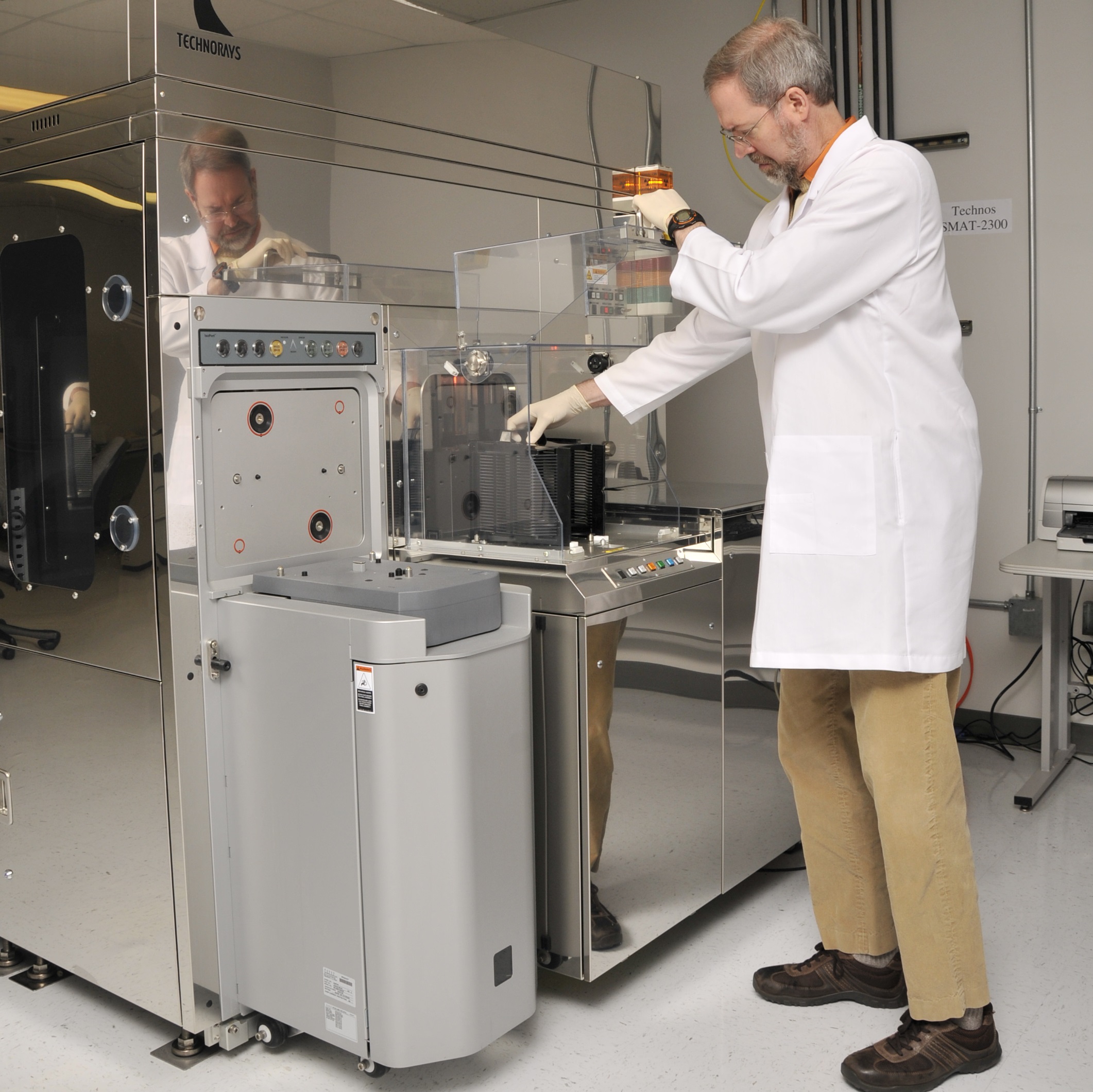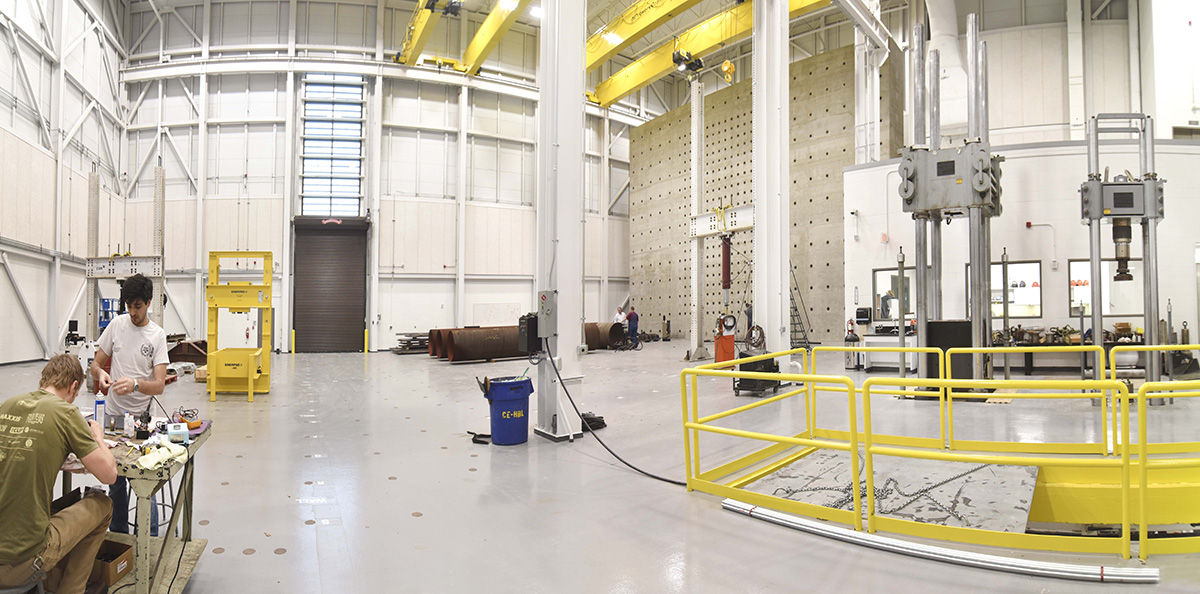Quality Control Unleashed: Material Testing Lab for Job Honesty
Quality Control Unleashed: Material Testing Lab for Job Honesty
Blog Article
Unveiling the Tricks of Materials: Advancements in Modern Product Testing
In the ever-evolving globe of materials scientific research, scientists are continuously seeking ways to open the surprise keys of numerous materials. The mission to recognize the properties, behavior, and possible applications of materials has actually brought about impressive developments in modern material testing. From nanotechnology and artificial intelligence to non-destructive screening and high-throughput screening, brand-new strategies are arising that assurance to transform our understanding of products. But what are these innovations? Just how do they function? And what can they expose regarding the products we come across on a daily basis? In this conversation, we will certainly unwind the mysteries behind these innovative technologies and explore how they are improving the area of material scientific research.
Nanotechnology: Enhancing Product Evaluating Abilities
Nanotechnology has actually reinvented material screening by boosting its abilities and enabling for unprecedented precision and accuracy. With the capability to adjust and manage products at the nanoscale, researchers and designers have actually had the ability to discover brand-new understandings right into the behavior and buildings of various products. This has actually opened an entire brand-new avenue for material testing, making it possible for researchers to delve much deeper right into the fundamental attributes of products and explore their prospective applications.
One of the crucial benefits of nanotechnology in product screening is its ability to offer highly precise dimensions. By utilizing specialized nanoscale probes and sensors, scientists can get in-depth info regarding a product's mechanical, electrical, and thermal buildings. This degree of precision is crucial for markets such as aerospace, automotive, and electronics, where also the least deviation from preferred specifications can have considerable effects.
Additionally, nanotechnology has allowed for the growth of unique testing strategies that were previously unthinkable. For instance, scanning probe microscopy strategies, such as atomic pressure microscopy and scanning tunneling microscopy, allow scientists to imagine and manipulate products at the atomic level. This unprecedented degree of control and monitoring has led the method for advancements in understanding material actions and developing innovative products with tailored properties.
Artificial Intelligence: Revolutionizing Product Analysis
The assimilation of synthetic knowledge has caused a transformation in material analysis, significantly improving the speed, accuracy, and efficiency of the process. With the capability to assess large amounts of information in real-time, artificial knowledge (AI) algorithms can promptly determine patterns, anomalies, and connections that might or else go undetected by human experts. This allows researchers and scientists to gain a deeper understanding of materials and their buildings, leading to the development of better and new products for different applications.
AI-powered material analysis also enables the prediction of product habits under various problems, saving considerable time and sources in the screening stage. By imitating numerous scenarios, AI formulas can properly predict exactly how products will certainly carry out in various atmospheres, enabling designers to make enlightened decisions about their viability for certain applications.
In addition, AI formulas can enhance material screening processes by immediately adjusting parameters and experiment designs based upon real-time feedback (material testing lab). This not only speeds up the testing process however also ensures that the optimum quantity of information is obtained from each experiment, causing more trusted and extensive results

Non-Destructive Testing: Exploring Materials From Within
Non-destructive testing methods provide an one-of-a-kind means to discover the interior framework and properties of products without triggering any damage or modification. These strategies have actually reinvented the field of material screening by enabling designers and scientists to analyze products from within, without compromising their integrity. Non-destructive screening approaches use different innovations and methods to evaluate products and give useful insights right into their composition, flaws, and efficiency.
One widely made use of non-destructive screening strategy is ultrasonic testing, which entails sending out high-frequency audio waves through a material and evaluating the mirrored waves to determine its inner framework. This method is typically used to discover flaws, such as gaps or cracks, in metals, compounds, and concrete. One more method, referred to as X-ray radiography, utilizes X-rays to produce photos of the interior functions of a material, making it especially valuable for inspecting welds and spotting concealed flaws.
Various other non-destructive testing approaches include magnetic bit testing, which uses electromagnetic fields to determine surface area and near-surface issues in ferromagnetic products, and eddy existing screening, which utilizes electromagnetic induction to find imperfections in conductive products. These techniques, great post to read in addition to others like thermography and visual inspection, offer useful details about the architectural integrity and quality of materials, guaranteeing their reliability and security in various applications.
Non-destructive testing is particularly critical in markets such as aerospace, vehicle, power, and building, where the performance and integrity of products are of utmost value. By enabling thorough material evaluation without creating damage or change, non-destructive testing strategies play a crucial role in guaranteeing the high quality and longevity of products in a vast array of applications.
High-Throughput Screening: Accelerating Material Exploration
High-throughput screening techniques have changed the procedure of product exploration by increasing the identification and assessment of new products. This approach allows researchers to quickly evaluate a a great deal of materials, allowing the recognition of promising prospects for more investigation.
High-throughput testing includes making use of automated systems and robotics to carry out experiments widespread (material testing lab). This allows scientists to swiftly evaluate a variety of products under numerous problems, such as pressure, temperature level, and composition. By analyzing the resulting data, scientists can determine products with wanted buildings, such as high toughness, conductivity, or thermal security
Among the essential benefits of high-throughput screening is its capability to accelerate the exploration of new materials with enhanced residential or commercial properties. Traditional methods of product discovery frequently involve experimentation, which can be ineffective and lengthy. With high-throughput testing, scientists can systematically discover a huge array of products in a portion of the time, considerably accelerating the exploration process.
Furthermore, high-throughput testing can additionally give important understandings right into the underlying structure-property partnerships of materials. By evaluating a multitude of materials with differing structures and structures, researchers can better comprehend just how various variables affect product buildings. This understanding can after that be made use of to design and maximize materials with particular homes for various applications, such as energy storage space, electronics, and medical care.
Advanced Simulation Techniques: Predicting Product Performance
Advanced simulation techniques play an important duty in forecasting the efficiency of products in different applications. These techniques entail making use of computer system models and mathematical formulas to simulate the behavior of products under different conditions. By mimicing the actions of materials at the atomic and molecular degree, researchers can gain useful insights into their mechanical, thermal, and chemical residential properties.
One of the essential advantages of innovative simulation methods is their capacity to anticipate product performance prior to physical screening. This not just saves time and resources however additionally enables researchers to check out a wider series of products and style criteria. For instance, in the field of products style, simulations can assist recognize the ideal make-up and structure of a find out this here material to accomplish specific properties.

In enhancement to forecasting product efficiency, these simulation techniques likewise aid in recognizing the hidden devices that control product behavior. By assessing the simulation results, scientists can obtain insights right into the basic principles that dictate the homes and performance of materials.
Conclusion
Finally, the advancements in product screening strategies have significantly boosted our understanding and analysis of numerous products. Nanotechnology has actually enabled boosted capabilities in testing and adjusting materials at the nanoscale. Man-made knowledge has revolutionized product evaluation by providing much faster and extra exact outcomes. Non-destructive screening has actually allowed us to explore the internal residential properties of products without creating damage. High-throughput screening has actually accelerated the discovery of new products. Advanced simulation methods have actually played a critical function in forecasting product performance. These advancements remain to open the keys of materials and drive more improvements in numerous sectors.
The pursuit to recognize the residential or commercial properties, habits, and prospective applications of materials has led to exceptional innovations in modern product screening. These methods have revolutionized the field of material screening by making it possible for researchers and engineers to analyze products from within, without compromising their honesty. By examining a huge number of materials with varying make-ups and frameworks, researchers can better comprehend how different factors affect product residential or commercial properties. In the field of products layout, simulations can help determine the ideal make-up and framework of a material to attain details buildings.
In final thought, the improvements in material testing techniques have actually significantly improved our understanding and evaluation of various products.
Report this page